25 September 2013
What makes Argia different from other cities is that it has earth instead of air. The streets are completely filled with dirt, clay packs the rooms to the ceiling, on every stair another stairway is set in negative, over the roofs of the houses hang layers of rocky terrain like skies with clouds. We do not know if the inhabitants can move about the city, widening the worm tunnels and the crevices where roots twist: the dampness destroys people’s bodies and they have scant strength; everyone is better off remaining still, prone; anyway, it is dark.
Italo Calvino, Invisible Cities (chapter 8: Cities and the dead, 4)
There is a hole at the center of the Israeli Pavilion. It’s the end of a tunnel connecting Israel with Venice. A tunnel dug by an eccentric band of men and women. Rather than a speleological expedition, it seems to be an epic exploit. The purpose of the journey: a workshop of sculpture inside the pavilion.
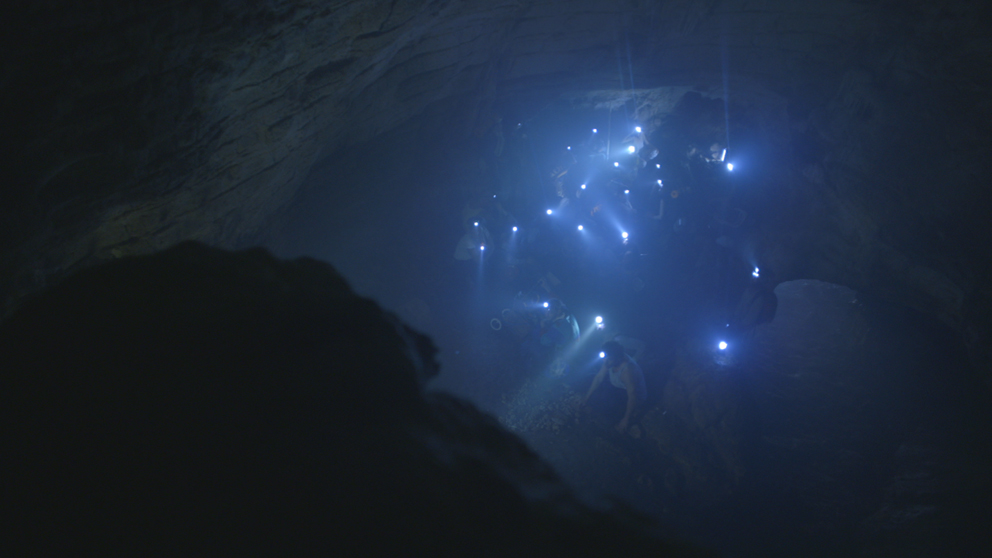
Gilad Ratman, The Workshop, 2013. Courtesy of Braverman Gallery.
Gilad Ratman, the artist invited to represent Israel at the 55th Venice Biennale, tells us a bizarre and paradoxical story. His installation, entitled The Workshop, is made up of videos, clay sculptures and a mixing console. As soon as they cross the building’s threshold, a gloomy, hollow melody surrounds visitors—it seems to emerge from the depths of the crater excavated in the middle, bringing up the sounds and noises of the Earth. The music speeds up, the baritone notes mark time menacingly. Piercing shrieks and groans burst into the room, in a crescendo that envelops the walls. Now, the grating roar of a conflagration, and then silence. The videos illustrate the different stages of the expedition: the departure of the company from the caverns of Israel; the underground journey through the Middle East and Europe; finally, the arrival in Venice and the start of the workshop.
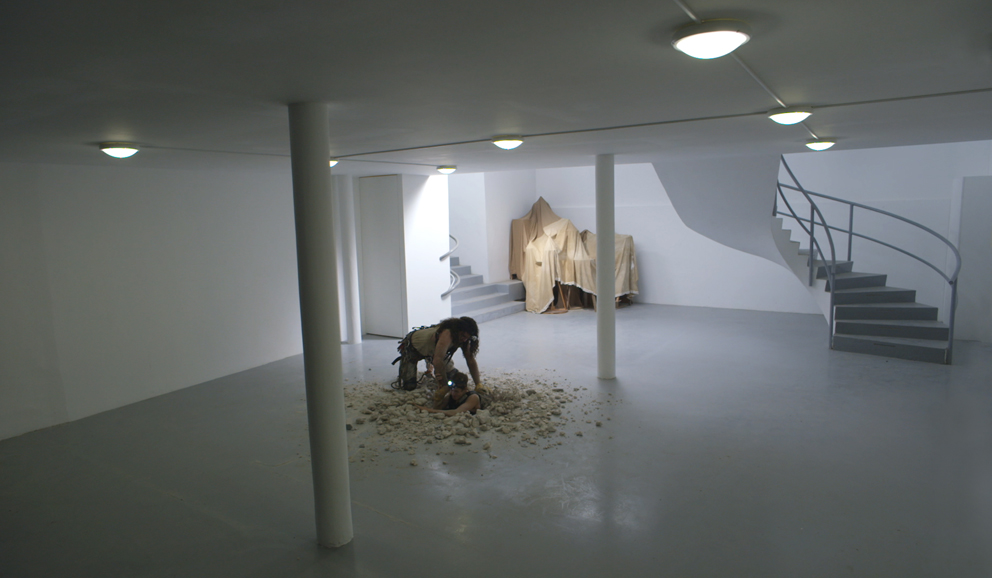
Gilad Ratman, The Workshop, 2013. Courtesy of Braverman Gallery.
The material worked in this last is clay. Each member of the group models his or her self-portrait: the clay is molded with ardor and brutality—someone punches his own effigy, another transfixes it with spatulas, someone else caresses his face with his fingers. There are microphones planted in the sculptures that record the cries and howls of the sculptors—the workshop resembles a primitive Dionysian ritual. A DJ, on the lower floor, mixes the wails coming from the audio prostheses: this is how the music that greets visitors to the pavilion is produced —a sinister, sorrowful dirge that alludes to a primordial dimension, predating any civilization.
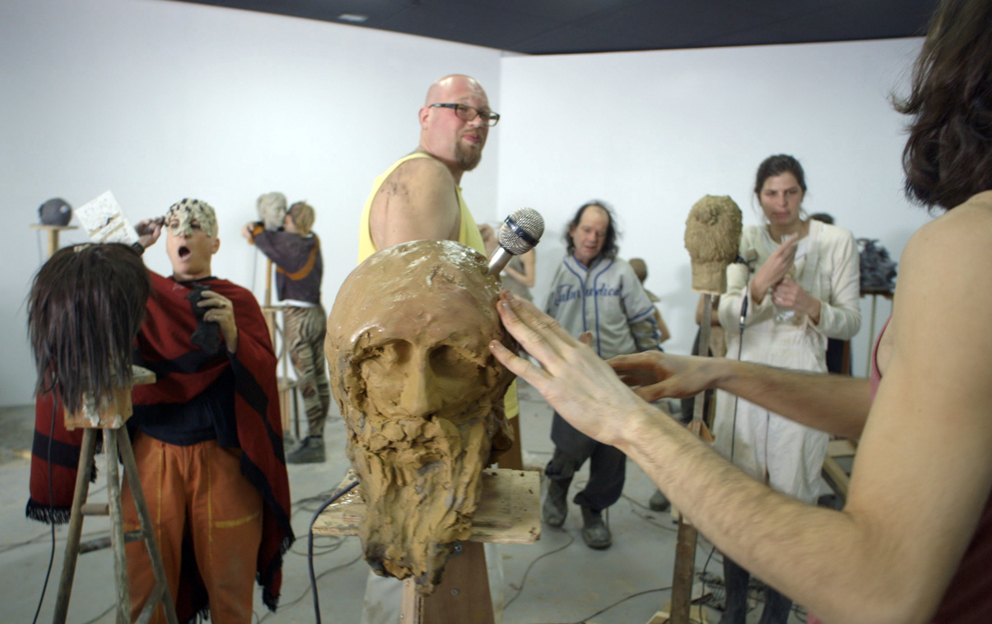
Gilad Ratman, The Workshop, 2013. Courtesy of Braverman Gallery.
Ratman’s installation—irrational, vital, archaic—has a profound political connotation: it reflects on the meaning of boundary and national frontier; it presents a utopian idea, that of free circulation between the nations, made possible by an imaginary network of subterranean channels able to secretly connect up the entire surface of the Earth. A model, therefore, that looks back with nostalgia to an original state of nature in which there were no differentiated political entities. The artist, undoubtedly, is referring to a particular situation and one that is close to him: the smuggling tunnels of Gaza, the “hot spot” of the Middle East, the unending conflict between Israel and Palestine. A conflict that only dreams and utopias can sort out.
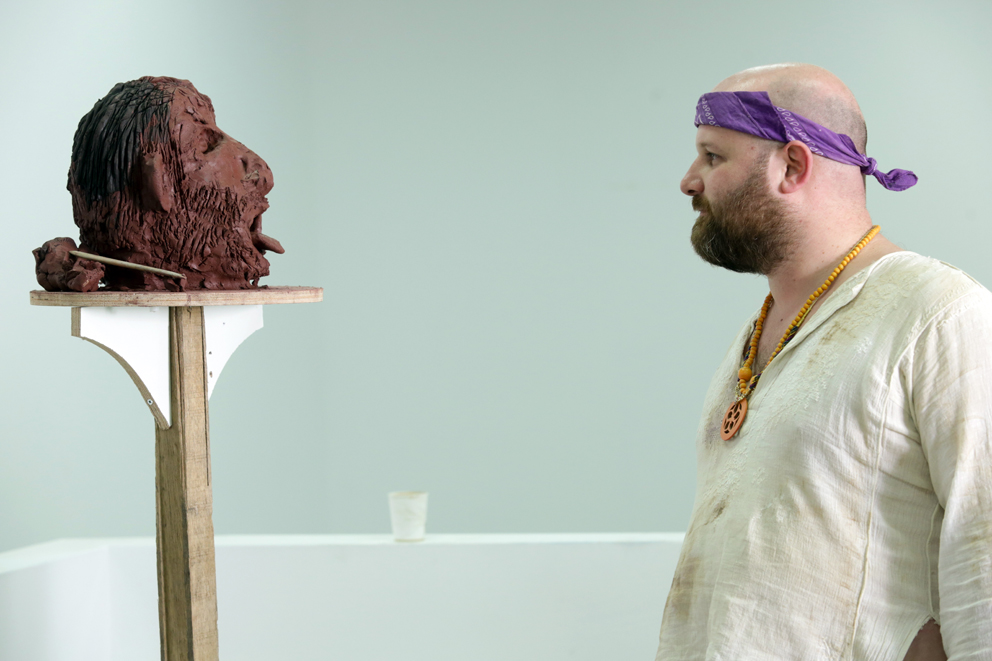
Gilad Ratman, The Workshop, 2013. Courtesy of Braverman Gallery.
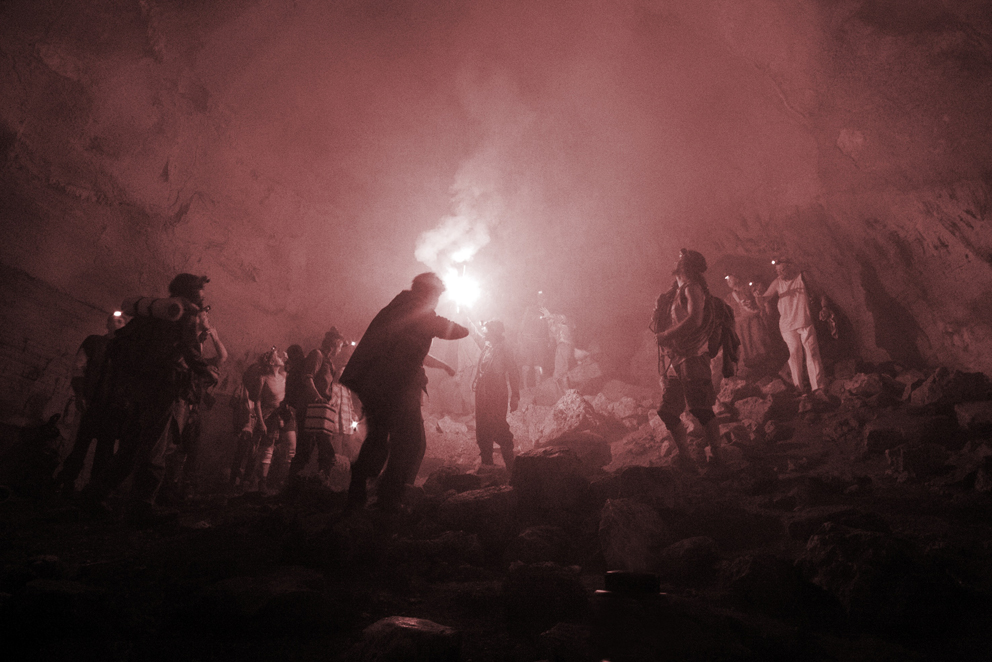
Gilad Ratman, The Workshop, 2013. Courtesy of Braverman Gallery.
Follow Federico Florian on Google+, Facebook, Twitter.
Dello stesso autore / By the same author: ArtSlant Special Edition – Venice Biennale
Notes on ‘The Encyclopedic Palace’. A Venetian tour through the Biennale
The national pavilions. An artistic dérive from the material to the immaterial
The National Pavilions, Part II: Politics vs. Imagination
The Biennale collateral events: a few remarks around the stones of Venice